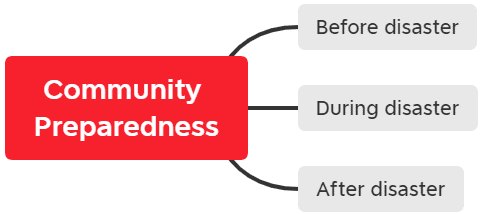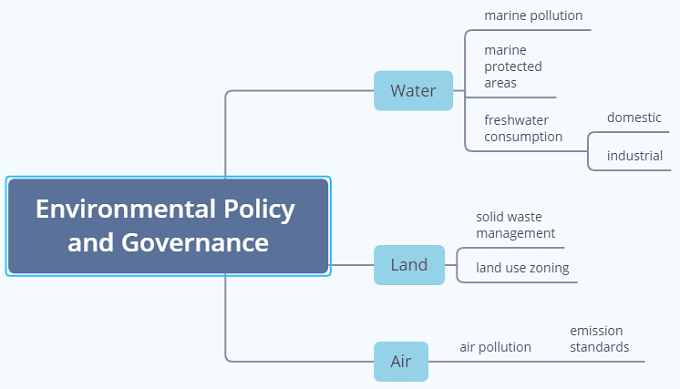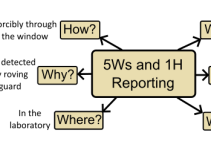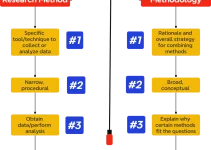What is a research agenda? What are the two tools that you can use to narrow down your research topic into manageable bits based on the research agenda? This article aims to answer these questions that students often encounter in writing their thesis.
One of the most difficult part of the research process, particularly for students who for the first time will work on their research, is to identify their research topic. If this will be the first time that you will do your research, I find the following steps helpful both for me and my students who are working on their thesis.
Familiarize yourself with your institution’s research agenda. You can virtually do any research along your field of specialization, but the outcome of your research may not be relevant to your school or university’s research agenda. Aligning your research agenda with the institution’s research agenda is important and necessary.
The Importance of a Research Agenda
What is a research agenda, anyway?
A research agenda is a list of broad research themes that a university has identified after a series of consultations with its stakeholders or clientele. Consulting the stakeholders is an important process to make the organization relevant and helpful to the community it serves.
In the past, many institutions of higher learning in developing countries focused mainly on instruction. But that has changed. Now, the emphasis is on academic research as a driver of innovation and development to become globally competitive.
The society’s problems are many, thus there is a need to streamline efforts to remedy these problems given the limited resources a university, or any organization, can adequately address. The research agenda narrows down those broad concerns and makes possible the generation of solutions to those problems.
Examples of an institution’s departmental research agenda are:
- Disaster Risk Reduction and Management
- Biodiversity Conservation
- Environmental Policy and Governance
- Environmental Technology
Example Research Agenda No. 1: Disaster Risk Reduction and Management
These research themes did not arise from nowhere but from a series of community consultation on their concerns.
For example, the theme “Disaster Risk Reduction and Management” came up because of the many problems associated with disasters befalling a community. Typhoons appeared to have become more severe, perhaps because of climate change. There is a need to ease the severe impact of typhoons in communities, as livelihoods have been severely affected.
As a responsible sector of the community, the academe can augment the local government’s efforts to support through research. Research can identify adaptation options to enable the people to become more resilient and able to bounce back from the negative impacts of disaster.
Given the research agenda, you can now think of other ways to deal with disasters by looking at various angles of the issue. Examples include narrowed down subtopics under Disaster Risk Reduction and Management, such as community preparedness that can be broken down into narrower areas of concern using a mind map:

Given this mind map, you can then decide whether to go for a study of community preparedness before. during, or after, disaster. You might opt to study everything, meaning, community preparedness before, during, and after disaster. But given your limited resources, it is better to focus on one area and make more detailed subtopics under it to make your research manageable given your constraints.
For example, you can study community preparedness in terms of utilization of social capital in your locality. How do people relate with each other in dealing with disasters such as typhoons that beset their locality?
Social capital refers to the networks of relationships among people who live and work in a particular society, enabling that society to function effectively.
Oxford Dictionary
Example Research Agenda No. 2: Biodiversity Conservation
Biodiversity conservation as a research area spans a multitude of topics for the student to lay his or her hands on. One way to break this research area down is, again, to map out concerns into a mind map.

Simply mapping biodiversity conservation this way helps you put things into context and helps focus your attention on your specific species of interest. For instance, you might be interested in the trade of an endangered mammalian species such as pangolin. So what could be the aim of your study that aligns with biodiversity as a major goal?
Examples of these research objectives on pangolin trade and the expected information to be derived in the following matrix:
| No. | Research Objective | Expected Information/Outcome |
| 1 | trace the source of pangolin | a list of locations where pangolin was sourced |
| 2 | determine the economic value of pangolin | pangolin parts and their respective values |
| 3 | identify the disposal schemes of confiscated pangolin | disposal scheme of pangolin bodies and parts |
| 4 | estimate the costs incurred in law enforcement | costs incurred by enforcing agencies in terms of personnel, logistics, materials, among others |
Having these objectives in mind, you can clearly visualize the expected information that you will get to help you understand better the circumstances of illegal pangolin trade. To get information that you need, you will now identify ways on how those information will be retrieved (e.g. your methodology).
Thus, you will see in these examples that we can break a broad research agenda down into manageable bits through mind mapping (Example no. 1) and using both a mind map and a matrix (Example no. 2).
Example Mind Maps for Research Agenda Nos. 3 and 4
We can do the same approach on the other two research agendas mentioned earlier: environmental policy and governance and environmental technology.
Simple mind mapping can yield the following outputs for environmental policy and governance and environmental technology:


Freely writing ideas and rearranging them based on a central theme help clarify your research concerns. The mind map becomes richer in keywords as you read more literature related to the topic at hand.
Thus, a review of relevant literature gives you more ideas and information that will eventually lead to the successful map of what you want to do in your research — its conceptual framework. The conceptual framework guides you in writing the content of your paper based on the written objectives.
Summary
To sum it all up, the research agenda directs what concerns are important to the institution or organization where you belong. Without the research agenda to serve as the overall backdrop of all research investigations, efforts, and resources are dispersed and less effective in addressing what is important to the organization and its clientele. The research agenda streamlines activities, saves and optimizes on resources, and establishes priorities for greatest benefit.
Two tools can help specify areas of investigation, namely mind mapping and matrix of objectives and expected information or output to answer the research objectives. This article showed how these two tools narrowed down the research agenda into manageable components.
©2022 October 14 J. P. A. Regoniel


